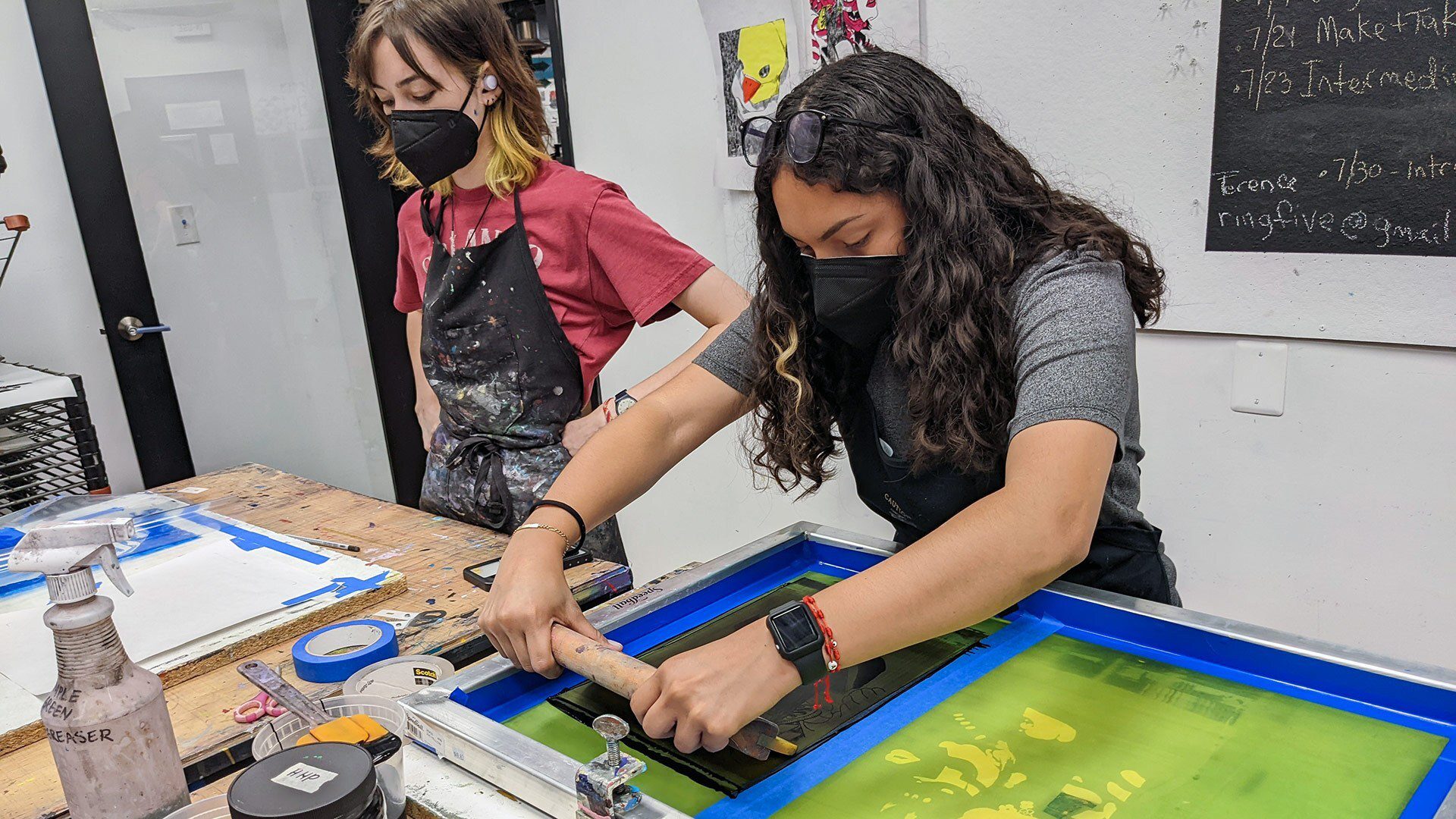- October 14, 2022
- By Sala Levin ’10
From the monja blanca (white nun orchid) of Guatemala to the yigüirro, the thrush that’s the national bird of Costa Rica, to the geometric dahlias beloved in Mexico, this year’s official Hispanic Heritage Month poster for Prince George’s County celebrates the natural—and human—beauty of Hispanic countries and cultures.
A University of Maryland undergraduate student, Jeanette Bolden ’22, co-led the design process that led to the Maryland-National Capital Park and Planning Commission (MNCPPC) poster, teaching middle and high school students from across the county the principles and techniques of the screen-printing process they used to create the piece.

Guided by the theme “unidos,” or “united,” the group—including Bolden’s teaching partner, art educator Andrea Worthington-Garcia—focused on colors, nature and symbolism from different textiles and flags, said Bolden. The goal was to “show that even though everyone is different in one way or another, we can still live together in one atmosphere. We are all strong together even despite—or maybe because of—our differences.”
Over a six-week paid summer internship at Hyattsville’s Pyramid Atlantic Art Center, the five students learned about collage, collaborative design and screen printing. Artists at the nonprofit, which offers spaces and services for papermaking, printmaking and book arts, often work in etching, lithograph or letterpress, but “screen printing seems to be the most popular among the young crowd,” said Némesis Zambrano, Pyramid Atlantic’s engagement manager. The medium also lends itself well to collaborative design, she said.
Bolden, who had been a regular volunteer at Pyramid Atlantic, helped spark the students’ inspiration by showing them protest and activist art from the past, and from current organizations like Amplifier, a nonprofit design organization that creates art influenced by social movements. They also looked at similarly themed posters, like the Latino heritage poster from the American Library Association. Bolden hoped that the students would learn “how to engage community using the power of art.”
After settling on the natural world as a theme, the group chose flowers, plants and birds to represent Mexico and Central and South American countries. They also included some human-made elements, like textiles, and a pair of hands clasped together to symbolize togetherness.
Flying through the blue sky (with swirls to indicate the winds of migration) are the águila harpía (harpy eagle) found throughout the region and the Costa Rican thrush. Below them are philodendrons and bromeliads native to tropical climates, as well as El Salvador’s flor de izote (yucca tree flower) and Nicaragua’s sacuanjoche (plumeria), among others. The floral diversity suggests the mix of Hispanic cultures in the U.S., while the pre-Columbian statue behind the cactus represents the indigenous people of Spanish-speaking countries.
The experience was especially resonant in Prince George’s County, whose population is about 22% Hispanic. “All the students have different ethnic backgrounds,” said Bolden. “The program is a learning opportunity for people to expand their knowledge of Hispanic artists.”
Hispanic Heritage Month posters are available for pickup at all Prince George’s County facilities.
This is one of a series of Maryland Today features during National Hispanic Heritage Month celebrating Terp faculty, staff, students and alums.
Topics
Arts & Culture